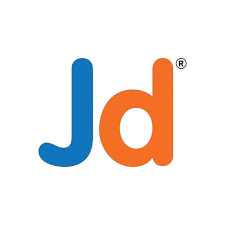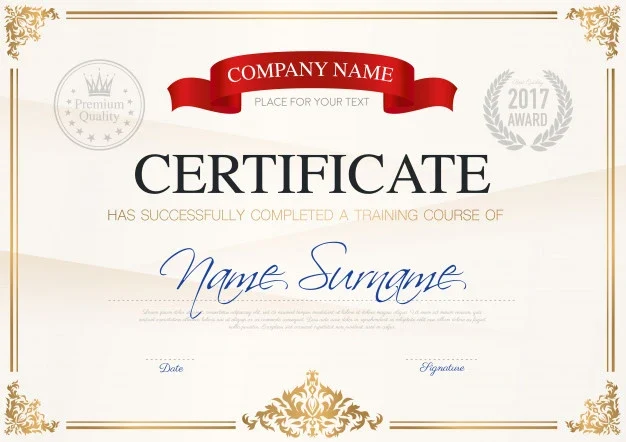
0
+
Google Reviews

0
+
An MS SQL Server Developer is a professional who specializes in working with Microsoft SQL Server, a popular relational database management system (RDBMS). SQL Server is widely used in various industries for data storage, management, and retrieval. MS SQL Server Developers play a crucial role in the development and maintenance of SQL Server databases, ensuring data reliability, performance, and security for a wide range of applications and systems in the Microsoft ecosystem.


Choosing to learn Terraform can be highly beneficial for several reasons:
1. Infrastructure as Code (IaC): Terraform allows you to define and manage your infrastructure as code. This approach provides numerous benefits, including version control, repeatability, and consistency in infrastructure deployments. With Terraform, you can codify your infrastructure, making it easier to manage, maintain, and scale.
2. Multi-Cloud Support: Terraform supports multiple cloud providers, including AWS, Azure, Google Cloud Platform (GCP), and others. This means you can use the same tooling and processes to manage infrastructure across different cloud environments, enabling hybrid and multi-cloud deployments.
3. Automation and Orchestration: Terraform automates the provisioning and management of infrastructure resources, allowing you to define complex infrastructure setups with ease. By using Terraform, you can automate repetitive tasks, reduce manual errors, and increase efficiency in infrastructure management.
4. Scalability and Flexibility: Terraform is highly scalable and flexible, making it suitable for managing infrastructure at any scale. Whether you’re deploying a single virtual machine or a complex microservices architecture, Terraform provides the tools and capabilities to manage your infrastructure effectively.
5. Community and Ecosystem: Terraform has a large and active community of users, contributors, and module developers. This vibrant ecosystem provides access to a wide range of reusable modules, plugins, and integrations, making it easier to leverage best practices and accelerate development.
6. Cloud Native Integration: Terraform integrates seamlessly with cloud-native technologies such as Kubernetes. This allows you to manage both infrastructure and application deployments using a unified workflow, simplifying the management of modern, containerized applications.
7. Compliance and Governance: Terraform supports compliance and governance requirements by enabling you to define and enforce policies, standards, and configurations as code. With Terraform, you can implement security controls, enforce best practices, and ensure consistency across your infrastructure deployments.
8. Career Opportunities: Terraform skills are in high demand in the job market. By learning Terraform, you can increase your value as a professional and open up career opportunities in roles such as DevOps Engineer, Cloud Engineer, Infrastructure Engineer, and Site Reliability Engineer. Overall, Terraform provides a powerful and versatile toolkit for managing infrastructure as code. Whether you’re working in a cloud-native environment or managing traditional infrastructure, Terraform can help you automate, manage, and scale your infrastructure effectively.






Understanding the Foundations of T-SQL
Understanding Logical Query Processing
Using the FROM and SELECT Clauses
The FROM Clause
The SELECT Clause
Delimiting Identifiers
Working with Data Types and Built-in Functions
Choosing the Appropriate Data Type
Choosing a Data Type for Keys
Date and Time Functions
Character Functions
CASE Expression and Related Functions
Filtering Data with Predicates
Predicates, Three-Valued Logic, and Search Arguments
Combining Predicates
Filtering Character Data
Filtering Date and Time Data
Sorting Data
Understanding When Order Is Guaranteed
Using the ORDER BY Clause to Sort Data
Filtering Data with TOP and OFFSET-FETCH
Filtering Data with TOP
Filtering Data with OFFSET-FETCH
Using Joins
Cross Joins
Inner Joins
Outer Joins
Multi-Join Queries
Using Subqueries, Table Expressions, and the APPLY
Operator
Subqueries
Table Expressions
APPLY
Using Set Operators
UNION and UNION ALL
INTERSECT
EXCEPT
Writing Grouped Queries
Working with a Single Grouping Set
Working with Multiple Grouping Sets
Pivoting and Unpivoting Data
Pivoting Data
Unpivoting Data
Using Window Functions
Window Aggregate Functions
Window Ranking Functions
Window Offset Functions
Creating and Altering Tables
Introduction
Creating a Table
Altering a Table
Choosing Table Indexes
Enforcing Data Integrity
Using Constraints
Primary Key Constraints
Unique Constraints
Foreign Key Constraints
Check Constraints
Default Constraints
Designing and Implementing Views and Inline Functions
Views
Inline Functions
Using Synonyms
Creating a Synonym
Comparing Synonyms with Other Database Objects
Inserting Data
INSERT VALUES
INSERT SELECT
INSERT EXEC
SELECT INTO
Updating Data
UPDATE Statement
UPDATE Based on Join
Nondeterministic UPDATE
UPDATE and Table Expressions
UPDATE Based on a Variable
UPDATE All-at-Once
Deleting Data
Sample Data
DELETE Statement
TRUNCATE Statement
DELETE Based on a Join
DELETE Using Table Expressions
Using the Sequence Object and IDENTITY Column Property.
Using the IDENTITY Column Property
Using the Sequence Object
Merging Data
Using the MERGE Statement
Using the OUTPUT Option
Working with the OUTPUT Clause
INSERT with OUTPUT
DELETE with OUTPUT
UPDATE with OUTPUT
MERGE with OUTPUT
Composable DML
Designing and Implementing Stored Procedures
Understanding Stored Procedures
Executing Stored Procedures
Branching Logic
Developing Stored Procedures
Implementing Triggers
DML Triggers
AFTER Triggers
INSTEAD OF Triggers
DML Trigger Functions
Implementing User-Defined Functions
Understanding User-Defined Functions
Scalar UDFs
Table-Valued UDFs
Limitations on UDFs
UDF Options
UDF Performance Considerations
Managing Transactions and Concurrency
Understanding Transactions
Types of Transactions
Basic Locking
Transaction Isolation Levels
Implementing Error Handling
Detecting and Raising Errors
Handling Errors After Detection
Using Dynamic SQL
Dynamic SQL Overview
SQL Injection
Using sp_executesql
Evaluating the Use of Cursor/Iterative Solutions vs. Set-Based Solutions
The Meaning of “Set-Based”
Iterations for Operations That Must Be Done Per Row
Cursor vs. Set-Based Solutions for Data Manipulation Tasks
Using Temporary Tables vs. Table Variables
Scope
DDL and Indexes
Physical Representation in tempdb
Transactions
Statistics
Returning Results As XML with FOR XML
Introduction to XML
Producing XML from Relational Data
Shredding XML to Tables
Querying XML Data with XQuery
XQuery Basics
Navigation
FLWOR Expressions
Using the XML Data Type
When to Use the XML Data Type
XML Data Type Methods
Using the XML Data Type for Dynamic Schema
+91 8882400500




I had undergone oracle DBA course under Chetan sir's Guidance an it was a very good learning experience overall since they not only provide us with theoretical knowledge but also conduct lot of practical sessions which are really fruitful and also the way of teaching is very fine clear and crisp which is easier to understand, overall I had a great time for around 2 months, they really train you well.also make it a point to clear all your doubts and provide you with clear and in-depth concepts hence hope to join sometime again

I have completed Oracle DBA 11g from Radical technology pune. Excellent trainer (chetna gupta). The trainer kept the energy level up and kept us interested throughout. Very practical, hands on experience. Gave us real-time examples, excellent tips and hints. It was a great experience with Radical technologies.

Linux learning with Anand sir is truly different experience... I don't have any idea about Linux and system but Anand sir taught with scratch...He has a great knowledge and the best trainer...he can solve all your queries related to Linux in very simple way and giving nice examples... 100 to Anand Sir.

I had a wonderful experience in Radical technologies where i did training in Hadoop development under the guidance of Shanit Sir. He started from the very basic and covered and shared everything he knew in this field. He was brilliant and had a lot of experience in this field. We did hands on for every topic we covered, and that's the most important thing because honestly theoretical knowledge cannot land you a job.

I have recently completed Linux course under Anand Sir and can assuredly say that it is definitely the best Linux course in Pune. Since most of the Linux courses from other sources are strictly focused on clearing the certification, they will not provide an insight into real-world server administration, but that is not the case with Anand Sir's course. Anand Sir being an experienced IT infrastructure professional has an excellent understanding of how a data center works and all these information is seamlessly integrated into his classes.

1. Basic user account management (creating, modifying, and deleting users).
2. Password resets and account unlocks.
3. Basic file system navigation and management (creating, deleting, and modifying files and directories).
4. Basic troubleshooting of network connectivity issues.
5. Basic software installation and package management (installing and updating software packages).
6. Viewing system logs and checking for errors or warnings.
7. Running basic system health checks (CPU, memory, disk space).
8. Restarting services or daemons.
9. Monitoring system performance using basic tools (top, df, free).
10. Running basic commands to gather system information (uname, hostname, ifconfig).
1. Intermediate user account management (setting permissions, managing groups).
2. Configuring network interfaces and troubleshooting network connectivity issues.
3. Managing file system permissions and access control lists (ACLs).
4. Performing backups and restores of files and directories.
5. Installing and configuring system monitoring tools (Nagios, Zabbix).
6. Analyzing system logs for troubleshooting purposes.
7. Configuring and managing software repositories.
8. Configuring and managing system services (systemd, init.d).
9. Performing system updates and patch management.
10. Monitoring and managing system resources (CPU, memory, disk I/O).
1. Advanced user account management (LDAP integration, single sign-on).
2. Configuring and managing network services (DNS, DHCP, LDAP).
3. Configuring and managing storage solutions (RAID, LVM, NFS).
4. Implementing and managing security policies (firewall rules, SELinux).
5. Implementing and managing system backups and disaster recovery plans.
6. Configuring and managing virtualization platforms (KVM, VMware).
7. Performance tuning and optimization of system resources.
8. Implementing and managing high availability solutions (clustering, load balancing).
9. Automating system administration tasks using scripting (Bash, Python).
10. Managing system configurations using configuration management tools (Ansible, Puppet).
1. Learning basic shell scripting for automation tasks. 2. Understanding file system permissions and ownership. 3. Learning basic networking concepts (IP addressing, routing). 4. Learning how to use package management tools effectively. 5. Familiarizing with common Linux commands and utilities. 6. Understanding basic system architecture and components. 7. Learning basic troubleshooting techniques and methodologies. 8. Familiarizing with basic security principles and best practices. 9. Learning how to interpret system logs and diagnostic output. 10. Understanding the role and importance of system backups and restores.
1. Advanced scripting and automation techniques (error handling, loops).
2. Understanding advanced networking concepts (VLANs, subnetting).
3. Familiarizing with advanced storage technologies (SAN, NAS).
4. Learning advanced security concepts and techniques (encryption, PKI).
5. Understanding advanced system performance tuning techniques.
6. Learning advanced troubleshooting methodologies (root cause analysis).
7. Implementing and managing virtualization and cloud technologies.
8. Configuring and managing advanced network services (VPN, IDS/IPS).
9. Implementing and managing containerization technologies (Docker, Kubernetes).
10. Understanding enterprise-level IT governance and compliance requirements.
1. Designing and implementing complex IT infrastructure solutions. 2. Architecting and implementing highly available and scalable systems. 3. Developing and implementing disaster recovery and business continuity plans. 4. Conducting security audits and vulnerability assessments. 5. Implementing and managing advanced monitoring and alerting systems. 6. Developing custom automation solutions tailored to specific business needs. 7. Providing leadership and mentorship to junior team members. 8. Collaborating with other IT teams on cross-functional projects. 9. Evaluating new technologies and making recommendations for adoption. 10. Participating in industry conferences, workshops, and training programs.
Abu Dhabi
Abu Dhabi
Abu Dhabi
Abu Dhabi
Abu Dhabi
Abu Dhabi
Abu Dhabi
Abu Dhabi
Abu Dhabi
Abu Dhabi
Abu Dhabi
Abu Dhabi
Abu Dhabi
Abu Dhabi
Abu Dhabi
Abu Dhabi
Abu Dhabi
Abu Dhabi
Abu Dhabi
Abu Dhabi
Abu Dhabi
Abu Dhabi
Abu Dhabi
Abu Dhabi
Abu Dhabi
Abu Dhabi
Abu Dhabi
Abu Dhabi
Abu Dhabi
Abu Dhabi
Abu Dhabi
Abu Dhabi
Abu Dhabi
Abu Dhabi
Abu Dhabi
Abu Dhabi
Abu Dhabi
Abu Dhabi
Abu Dhabi
Abu Dhabi







(Our Team will call you to discuss the Fees)


(Our Team will call you to discuss the Fees)